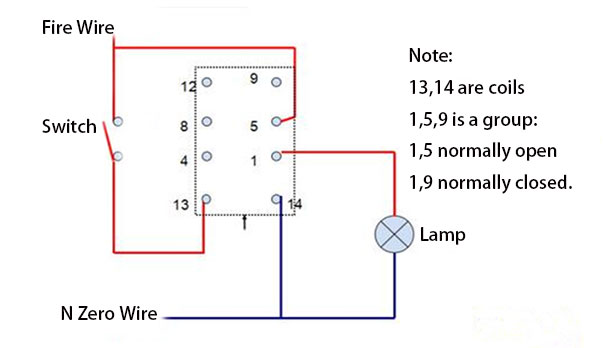How to Install an Electromagnetic Relay?
Electromagnetic relays are widely used in a variety of electrical control systems and equipment, from home appliances to industrial automation systems. Installing an electromagnetic relay is a critical step to ensure the proper functioning and reliability of a circuit. ATO shop will provide a detailed guide on how to install an electromagnetic relay, including preparations, installation steps, and solutions to common problems.
Preparation
Before you begin installing an electromagnetic relay, there are several preparations that need to be completed to ensure everything goes smoothly.
- Determine the Type of Relay: first, determine the type and specifications of the electromagnetic relay you will be installing. This includes knowing parameters such as current, voltage, circuit type, and switching capacity. Ensure that the selected perfect relay is suitable for your application requirements.
- Obtain an Installation Guide: Obtain the installation guides and specifications provided by the manufacturer. These documents often include detailed instructions on proper installation and connections.
- Prepare Required Tools and Materials: Gather the required tools and materials, such as screwdrivers, wire strippers, wire connectors, rails, or mounting bases. Make sure you have a safe working environment, including insulated gloves and goggles, etc.
- Disconnect the Power: Before installing a relay, make sure the circuit is disconnected to avoid electric shock or other safety risks.
Installing an Electromagnetic Relay
The steps for mounting an electromagnetic relay can vary depending on your specific application and relay type. Choose an appropriate location to mount the electromagnetic relay. Make sure it is away from heat sources, humidity, and corrosive chemicals to extend the life of the relay. Install the EM relay base or rail as needed to secure the EM relay in place. Ensure that the base or rail is securely mounted to the support structure. Connect the metal case of the EM relay to the ground for electrical safety. This usually involves connecting a wire to the electromagnetic relay housing and connecting it to the circuit's ground.

Connect the coil of the EM relay to the power source and then connect the electrical contacts to the loads in the circuit. This usually involves connecting the power supply wires to the coil terminals and ensuring proper connection polarity. Use wire connectors and insulating sleeves to ensure that the wires are securely connected and electrically isolated. Securely fasten the solenoid relay to the base or rail using screws to prevent it from moving under vibration or shock. Before re-energizing the unit, double-check all connections to ensure that everything is properly connected and tight. Then perform the necessary tests to ensure that the electromagnetic relay is working properly. This can include manually operating the EM relay, observing its switching status, and checking the connections to the load. Record information about the electromagnetic relay, such as manufacturer, model number, and date of installation, for future maintenance and repair.
Common Problems and Troubleshooting
There are some common problems that may be encountered when installing an electromagnetic relay. Here are some common problems and solutions.
- Relay Fails to Engage or Release: Check if the power supply is normal and make sure the coil is connected correctly. Check if the coil impedance and rated voltage of the electromagnetic relay match.
- Relay Heats up too Much: High temperatures can be a sign of a poor connection or overload of the electromagnetic relay. Check for proper wire connections and loads, and make sure the rated capacity of the EM relay is large enough.
- Electromagnetic Relay Generates Electromagnetic Interference: EM relays may generate electromagnetic interference during operation, affecting nearby electronic equipment. In this case, consider using an EMI suppression device or selecting a solid-state relay, as they usually do not generate EMI.
- Relays Make Noise During Operation: Electromagnetic relays may make noise when they are being engaged or disengaged. This is usually normal, but if the noise is excessive or persistent, you should check the mechanical parts of the EM relay, such as the contacts and springs, to make sure the electromagnetic relay is OK.

Installing an electromagnetic relay is a critical step in ensuring proper circuit operation and reliability. Following the manufacturer's installation guidelines and specifications to ensure that all connections are strong and correct can reduce the risk of malfunction and safety. If you are experiencing problems or uncertainty during the installation process, you are welcome to consult a specialist electrical engineer or technician at the ATO shop for advice and support. After the installation is complete, ensure that relevant information is recorded and regular maintenance is carried out to ensure the long-term performance of your electromagnetic relay.

